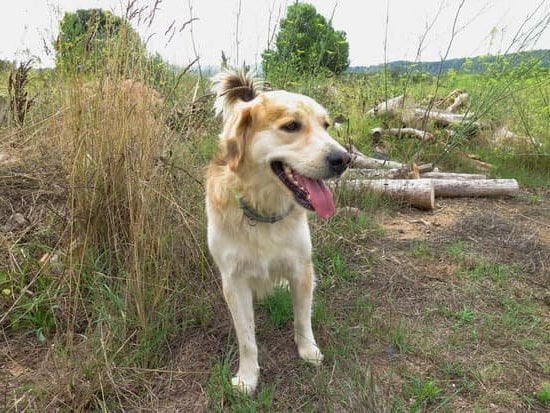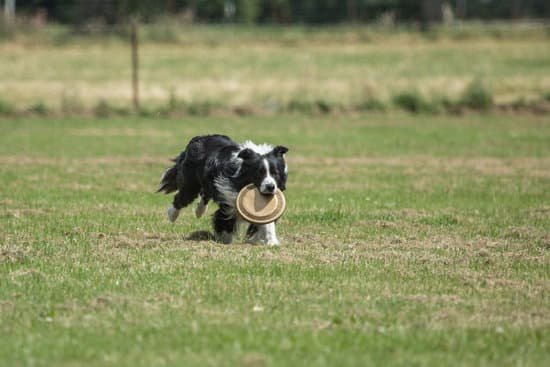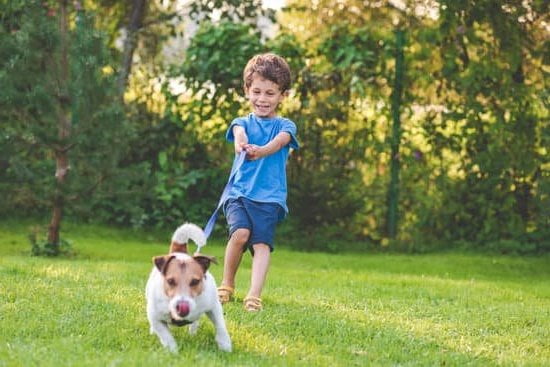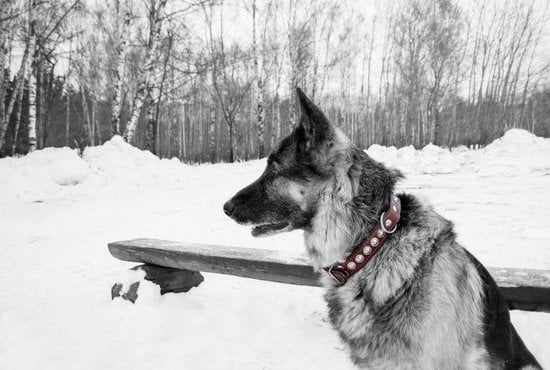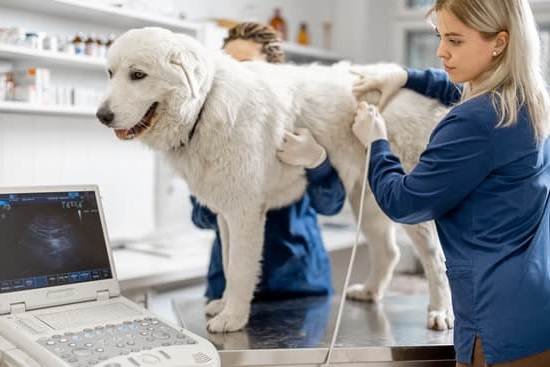Anxiety can be a debilitating condition for dogs, affecting their overall wellbeing and quality of life. In this article, we will explore the importance of training in helping dogs with anxiety. Understanding the signs of anxiety in your dog is crucial for early intervention, and creating a safe and comforting environment can greatly alleviate their symptoms. Additionally, establishing a consistent routine and implementing positive reinforcement training techniques are essential for managing anxiety in dogs.
By gradually desensitizing them to triggers and utilizing calming exercises and therapy tools, we can help our anxious pets lead happier and more confident lives. Finally, seeking professional help and maintaining patience and persistence throughout the training process are key to overcoming challenges and achieving success. Together, let’s empower ourselves with knowledge on how to train our dogs with anxiety and provide them with the support they need.
Identifying the Signs of Anxiety in Your Dog
As responsible pet owners, it is crucial to understand the signs and symptoms of anxiety in dogs. By being able to recognize these indicators, we can take appropriate measures to address and manage our furry friends’ anxiety effectively.
Behavioral signs are often the most obvious indications that a dog is dealing with anxiety. These can include excessive barking or whining, destructive behavior such as chewing or digging, trembling or shaking, and restlessness or pacing. An anxious dog may also display aggression towards people or other animals, exhibit submissive behaviors like hiding or cowering, or engage in repetitive behaviors like tail-chasing.
In addition to behavioral signs, there are physical signs that may suggest your dog is experiencing anxiety. These can vary from gastrointestinal issues like diarrhea or vomiting to changes in appetite, excessive shedding or hair loss, rapid breathing or panting, increased heart rate, and dilated pupils. Any combination of these signs should be taken seriously and could be indicative of an underlying anxiety issue.
To help illustrate the various signs of anxiety in dogs and make it easier for readers to identify them in their own pets, here are some examples:
1. Scenario: Your dog starts excessively licking their paws whenever they encounter a new person.
- Behavioral Sign: Excessive licking
- Physical Sign: Obsessive grooming leading to paw irritation 2. Scenario: Every time you prepare to leave the house without your dog, they begin to whine continuously.
- Behavioral Sign: Vocalization (whining)
- Physical Sign: Rapid breathing and pacing 3. Scenario: When there’s a thunderstorm outside, your dog hides under furniture and shakes uncontrollably.
- Behavioral Sign: Hiding
- Physical Sign: Trembling/shaking By understanding and recognizing these signs of anxiety in our dogs, we can intervene early on and implement appropriate training techniques and strategies to alleviate their anxiety and promote their overall well-being.
| Signs of Anxiety | Example Scenario |
|---|---|
| Excessive licking | Your dog starts excessively licking their paws whenever they encounter a new person. |
| Vocalization (whining) | Every time you prepare to leave the house without your dog, they begin to whine continuously. |
| Hiding | When there’s a thunderstorm outside, your dog hides under furniture and shakes uncontrollably. |
Creating a Safe and Comforting Environment for Anxious Dogs
Dogs with anxiety benefit greatly from having a safe and comforting environment that helps alleviate their symptoms. Providing them with a secure space can contribute to reducing their anxiety levels, improving their overall well-being, and increasing their confidence. In this section, we will discuss the significance of creating such an environment for anxious dogs and provide practical tips on how to modify the living space to cater to their needs.
Maintaining a calm and quiet atmosphere is crucial for anxious dogs. Loud noises or sudden disturbances can trigger their anxiety, so it’s important to minimize any potential stressors in their surroundings. One way to achieve this is by designating a specific area in your home where your dog can retreat when they are feeling overwhelmed.
This could be a corner of a quiet room or even a cozy crate with soft bedding. By providing them with this safe zone, you are giving them a place where they can feel secure and protected.
In addition to creating a designated safe space, there are other modifications you can make to the environment that can help ease your dog’s anxiety. For example, consider using soothing music or white noise machines to mask outside sounds that may be triggering for your dog.
You can also try using calming pheromone diffusers or sprays designed specifically for dogs with anxiety. These products release synthetic versions of natural compounds produced by mother dogs during nursing to create a sense of security and relaxation.
Another factor to consider is the overall layout and organization of your home. Keeping things tidy and clutter-free can have a positive impact on an anxious dog’s well-being. Cluttered spaces can be overwhelming for them and may add unnecessary stress to their already heightened anxiety levels. Having clear pathways and minimizing obstacles in the house will help your dog navigate comfortably while reducing potential triggers.
By implementing these simple modifications in your home, you are creating an environment that promotes relaxation and comfort for your anxious dog. A safe and comforting space paired with other training techniques can significantly improve their overall quality of life and help them feel more at ease in their surroundings.
| Tips for Creating a Safe Environment for Anxious Dogs |
|---|
| Designate a specific area in your home where your dog can retreat when they are feeling overwhelmed. |
| Use soothing music or white noise machines to mask outside sounds that may trigger anxiety. |
| Consider using calming pheromone diffusers or sprays to create a sense of security and relaxation. |
| Maintain a tidy and clutter-free living space to reduce potential triggers and promote calmness. |
Establishing a Consistent Routine and Structure
Having a consistent routine and structure is crucial for dogs with anxiety. Dogs thrive on predictability, and having a stable routine can help reduce anxiety and provide a sense of security. In this section, we will explore the positive impact of a structured routine in minimizing anxiety in dogs and provide detailed steps on how to create and maintain a consistent schedule for your anxious dog.
The Benefits of Routine for Anxious Dogs
Consistency in daily activities can help alleviate anxiety in dogs by providing them with a sense of stability. A structured routine establishes clear expectations for your dog, which can reduce uncertainty and the associated stress. When dogs have reliable schedules, they are better able to anticipate what is going to happen next, resulting in a calmer state of mind.
A consistent routine also helps manage an anxious dog’s needs effectively. Scheduled meal times, exercise sessions, and potty breaks give dogs a predictable rhythm to their day, ensuring that their physical and mental needs are met. This stability can contribute to overall feelings of security for an anxious dog.
Creating and Maintaining a Routine for Your Anxious Dog
When creating a routine for an anxious dog, it’s important to consider their specific needs and triggers. Here are some steps you can take to establish a consistent routine:
- Set Regular Times: Establish set times for feeding meals, going on walks, engaging in playtime, training sessions, and other activities. Aim to stick to these times as closely as possible every day.
- Add Calming Activities: Incorporate calming activities into the routine that promote relaxation and reduce anxiety levels. This could include scheduled nap times or incorporating interactive toys or puzzles during quieter moments.
- Gradual Adjustments: If your anxious dog is not used to having a routine or structure, introduce changes gradually to avoid overwhelming them. Start by implementing one or two new activities at a time and slowly build up to a full routine.
- Be Flexible: While routines are important, it’s essential to be flexible and adaptable when necessary. Understand that certain circumstances may require adjustments to the routine, but try to maintain consistency as much as possible.
By establishing a consistent routine for your anxious dog, you can provide them with the stability they need to help manage their anxiety effectively. The routine will not only help reduce stress but also contribute to their overall mental well-being.
Implementing Positive Reinforcement Training Techniques
Positive reinforcement training techniques are a crucial component in helping dogs with anxiety overcome their fears and build confidence. Unlike punishment-based methods, positive reinforcement relies on rewarding desired behaviors rather than focusing on punishing unwanted behaviors. This approach not only helps to create a positive and trusting relationship between the dog and their owner but also helps the anxious dog learn new behaviors and associations in a way that reduces their anxiety.
When implementing positive reinforcement training techniques, consistency is key. Here are some effective methods that can be used to train an anxious dog with positive reinforcement:
- Use treats and praise: Reward your dog with small, tasty treats and enthusiastic praise whenever they display calm or desired behaviors. This could include sitting quietly when someone enters the room or remaining calm during thunderstorms. Be sure to use treats that your dog finds highly motivating.
- Clicker training: The use of a clicker, a small handheld device that makes a clicking sound when pressed, can be an effective tool in positive reinforcement training. Pairing the sound of the clicker with rewards helps your dog understand which behaviors they are being rewarded for.
- Break tasks into manageable steps: Dogs with anxiety may struggle with certain tasks or activities. Breaking these tasks down into smaller, manageable steps can help reduce their anxiety and make it easier for them to succeed. Each step should be rewarded with treats and praise to reinforce positive behavior.
- Avoid punishment: Punishing an anxious dog can exacerbate their anxiety and cause further distress. Instead, focus on rewarding desired behaviors and redirecting their attention away from triggering stimuli.
By consistently implementing these positive reinforcement techniques, owners can help their anxious dogs gain confidence, reduce anxiety symptoms, and build a strong bond based on trust and understanding. It is important to remember that every dog is unique, so it may take time for improvements to be seen. Patience, persistence, and providing a safe environment will greatly contribute to the success of this training approach.
Gradual Desensitization and Exposure to Anxiety Triggers
Dog anxiety can often be triggered by specific situations or stimuli that cause fear and stress. For many anxious dogs, these triggers can range from loud noises, such as thunderstorms or fireworks, to being left alone or encountering strangers. Gradual desensitization and exposure training techniques can be highly effective in helping dogs overcome their anxieties by slowly introducing them to these triggers in a controlled and positive manner.
Understanding Desensitization
Desensitization is a process that involves exposing the anxious dog to their fear-inducing trigger at a level they can handle without becoming overwhelmed. The goal of desensitization is to gradually reduce the dog’s fear response over time. By repeatedly exposing the dog to the anxiety trigger in a safe and controlled setting, the dog begins to form new associations with the trigger, leading to decreased anxiety or fear.
Step-by-Step Guide to Desensitization
- Identify the Trigger: Begin by identifying the specific trigger that causes anxiety in your dog. This could be anything from car rides to meeting new people.
- Start with Minimal Exposure: Introduce your dog to a very mild version of the trigger that causes minimal anxiety. This could mean playing a recording of thunder at a low volume if storms are an issue for your dog.
- Monitor and Observe: As you expose your dog to the trigger, closely monitor their behavior for signs of distress or anxiety. Look out for body language cues like trembling, panting, licking lips, or attempting to escape.
- Gradually Increase Exposure: Once your dog becomes more comfortable with minimal exposure, gradually increase the intensity or duration of exposure over time. For example, if your dog is scared of car rides, start with getting them near the car and eventually work up to short drives around the block.
- Use Positive Reinforcement: Throughout each exposure session, provide positive reinforcement in the form of treats, praise, or play to reward your dog for calm behavior. This helps create positive associations with the trigger.
- Be Patient: Remember that desensitization takes time and patience. It is crucial not to rush the process and always work at a pace that is comfortable for your dog.
By implementing gradual desensitization and exposure techniques, you can help your anxious dog build confidence and overcome their triggers. However, it’s important to note that severe cases of anxiety may require professional guidance from a qualified trainer or behaviorist who specializes in anxiety management for dogs. With time, persistence, and proper training support, you can help your anxious dog lead a happier and more stress-free life.
Utilizing Calming Exercises and Therapy Tools
An anxious dog can greatly benefit from incorporating calming exercises and therapy tools into their daily routine. These techniques help to soothe and relax the dog, allowing them to better manage their anxiety. By utilizing these techniques, dog owners can provide their furry friends with a sense of comfort and security.
One effective method to calm an anxious dog is through aromatherapy. Certain scents, such as lavender or chamomile, have natural calming properties that can help reduce anxiety in dogs. Dog owners can use essential oils or specially formulated sprays to create a soothing environment for their pets. It’s important to remember that essential oils should be used sparingly and at a safe distance from the dog’s nose, as they have a more sensitive sense of smell than humans.
Another helpful technique is music therapy. Just like humans, dogs can find comfort in listening to calming music. There are playlists specifically designed for anxious dogs that feature soft melodies and soothing sounds. Playing this type of music during stressful times, such as thunderstorms or fireworks, can help distract the dog from their anxiety triggers and create a more serene atmosphere.
Physical exercises are also beneficial for anxious dogs as they release pent-up energy and promote relaxation. Engaging in activities such as long walks, jogging, or playing fetch not only provides mental stimulation but also helps to tire out the dog’s body. This physical exhaustion allows the dog to calm down more easily and reduces overall anxiety levels.
In addition to these calming exercises, there are various therapy tools available that can assist in anxiety management for dogs. One popular tool is the ThunderShirt, which applies gentle pressure on the dog’s body similar to swaddling an infant. This constant pressure has been shown to have a calming effect on many dogs with anxiety.
Overall, utilizing calming exercises and therapy tools can significantly contribute to alleviating anxiety in dogs. It’s important for dog owners to explore different options and find what works best for their individual pet. By incorporating these techniques into their routine, owners can provide their anxious dogs with a peaceful and soothing environment, ultimately leading to a happier and more confident pup.
Seeking Professional Help and Support
Training a dog with anxiety can be a challenging task, and sometimes it may require the expertise of professionals. Seeking professional help is crucial in ensuring that your dog receives the appropriate support and guidance to overcome their anxiety. Trainers, behaviorists, and veterinarians who specialize in anxiety management for dogs can offer valuable insights and techniques to assist you in your training journey.
When searching for a professional to aid in training your anxious dog, it is essential to find someone with experience and expertise in dealing with canine anxiety. Look for certifications or credentials that demonstrate their qualifications. Additionally, seek recommendations from trusted sources such as friends, family members, or fellow pet owners who have undergone similar training journeys.
A qualified trainer or behaviorist will conduct a thorough assessment of your dog’s anxiety triggers, behaviors, and environment before designing an individualized training plan. They will provide guidance on implementing positive reinforcement techniques, gradual exposure therapy, and creating a comfortable environment for your furry friend. Moreover, they can share additional tips and tricks specific to your dog’s needs.
Remember that overcoming dog anxiety requires patience and persistence both from you as the owner and from the professionals assisting you. It may take time for progress to occur, but with dedication and consistency in following their recommendations, you are likely to see improvement in your dog’s anxiety symptoms.
Seeking professional help should not be seen as a failure or sign of weakness but rather as a proactive step towards helping your dog lead a happier life. With their expertise combined with your love and commitment, you can create significant positive changes in your anxious dog’s behavior and well-being.
Patience and Persistence
Training a dog with anxiety can present unique challenges that require patience and persistence. It’s important to remember that overcoming anxiety is a gradual process, and it may take time for your dog to fully adjust and overcome their fears. In this section, we will discuss the importance of patience and persistence when training an anxious dog, as well as provide some tips to help you navigate the challenges along the way.
First and foremost, it is crucial to approach your training sessions with a calm and patient mindset. Dogs with anxiety can be easily overwhelmed by new experiences or situations, so it’s important to create a safe and comfortable environment for them to learn in.
Take things slow, break down tasks into smaller steps, and give your dog plenty of breaks during training sessions. Celebrate even the tiniest progress your dog makes, as positive reinforcement goes a long way in helping them build confidence.
Another key aspect of training an anxious dog is consistency. Establishing a consistent routine helps provide structure and predictability for your dog, which can greatly reduce their anxiety levels. Stick to a regular feeding schedule, establish set times for exercise and playtime, and keep bedtime consistent. Consistency not only helps your dog feel more secure but also allows them to understand expectations more easily.
It’s also important to remember that setbacks are normal throughout the training process. Your dog may have good days where they make significant progress, but they may also have bad days where they struggle or regress. During these challenging times, it’s crucial to remain patient and avoid getting frustrated or discouraged. Understanding that progress may not always be linear helps maintain a positive mindset and keeps you motivated to continue working with your anxious dog.
Conclusion
In conclusion, training a dog with anxiety requires understanding, compassion, and consistency. By recognizing the signs of anxiety in our dogs and creating a safe and comforting environment for them, we can help alleviate their symptoms and improve their overall wellbeing.
Consistency in routine and positive reinforcement training techniques are key in building trust and confidence in anxious dogs. Gradual desensitization to anxiety triggers, utilizing calming exercises and therapy tools, as well as seeking professional help when needed, are all important steps in helping our dogs overcome their anxiety.
It is essential to remember that training a dog with anxiety requires patience and persistence. Every dog is unique, and progress may take time. However, by staying committed to the training process and maintaining a positive mindset, we can make a significant difference in our furry friends’ lives.
By implementing the strategies and tips provided in this article, we have the potential to transform our anxious dogs into happier and more confident companions. Remember to celebrate small victories along the way and seek support from fellow dog owners or professionals if needed.
Together, we can create a nurturing environment where our dogs feel safe, loved, and free from the burden of anxiety. Let us embark on this journey of training with optimism and dedication to give our dogs the fulfilling lives they deserve.
Frequently Asked Questions
Can you train a dog out of anxiety?
It is possible to train a dog out of anxiety, but it often requires patience, consistency, and professional guidance. Anxiety in dogs can manifest in various ways, such as excessive barking, destructive behavior, or separation anxiety.
Training methods typically involve desensitization and counter-conditioning techniques to help the dog gradually become more comfortable and confident in anxiety-inducing situations. Professional trainers or animal behaviorists can provide tailored training plans to address your dog’s specific anxiety triggers and develop a positive association with them over time.
How do I get my dog out of anxiety?
Helping a dog overcome anxiety involves a multifaceted approach that encompasses various factors contributing to their anxious behavior. Firstly, it is essential to create a calm environment for your dog by providing them with a secure and comfortable space that includes familiar objects like their bed or toys. Additionally, maintaining a consistent routine and incorporating regular exercise into their daily schedule can greatly reduce anxiety levels.
Engaging in mental stimulation activities such as puzzle toys or obedience training exercises can also redirect their focus away from anxious thoughts. Some dogs may benefit from natural calming aids like pheromone diffusers or music specifically composed for relaxation purposes. In severe cases of anxiety, consulting with a veterinarian or canine behaviorist for further guidance and potentially considering medication may be beneficial.
How do I calm my anxious dog ASAP?
When you need to quickly calm an anxious dog, there are several strategies you can try. Firstly, maintaining your own calm demeanor is crucial since dogs often pick up on their owner’s emotions. Softly speaking in a reassuring tone while avoiding excessive physical attention can comfort your dog without reinforcing anxious behaviors.
Providing them with a safe space where they feel secure, such as their crate or a designated area with familiar items, can also help alleviate anxiety in the moment. Additionally, engaging in calming activities like gentle massage or slow leash walks in familiar surroundings are effective techniques for distracting your dog from anxious thoughts and promoting relaxation. However, it’s important to remember that these immediate calming strategies should be used in conjunction with a long-term approach to address the underlying causes of your dog’s anxiety.

Welcome to the blog! I am a professional dog trainer and have been working with dogs for many years. In this blog, I will be discussing various topics related to dog training, including tips, tricks, and advice. I hope you find this information helpful and informative. Thanks for reading!

